Surplus Ammunition – Don’t Call it Left Over Bullets
By Peter Suciu.
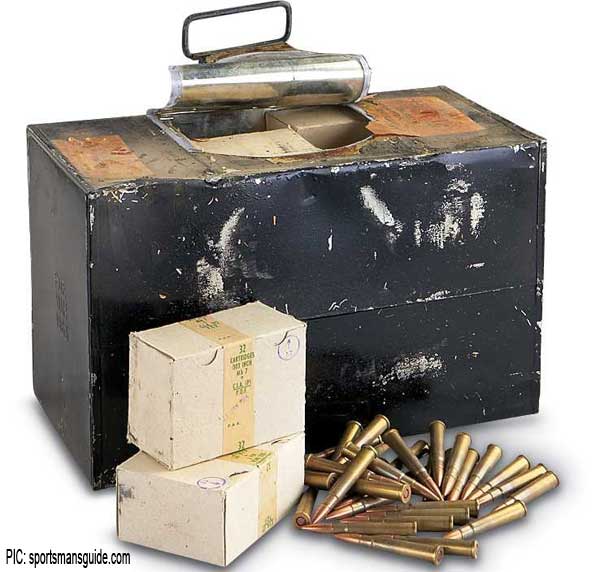

Manasquan, NJ –-(Ammoland.com)- The term “surplus” simply means an over supply; yet when used in conjunction with militaria or pretty much anything to do with the military, it often evokes used equipment or to some a substandard product.
This most certainly isn’t the norm when discussing surplus ammunition, and in fact, a lot of military ammo could be considered far superior to the commercial grade ammo in the same calibers.
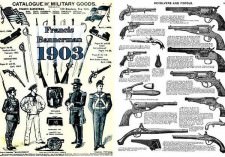
To understand surplus ammunition, at least from an American perspective, requires a basic understanding of the nature of surplus equipment. Following the American Civil War there was simply more equipment than the vastly reduced U.S. military forces could ever use. This in turn led to the original surplus market, which spawned mail order catalogs such as the famous Bannerman’s catalog, where all sorts of used as well as un-issued equipment could be purchased. And while those prices may look like bargains by today’s standards, these were hardly bargain basement prices.
“Surplus ammo surely came early, as modern cartridge firearms evolved very rapidly in the late 1800s,” says Chris Clinton, who previously ran the old surplus ammo business Cannon and Cartridge. “Each time a rifle or round became the new performance ‘champ,” many issue weapons and their cartridges were sold off as obsolete. Sometimes a round (as well as rifle) would pass down to second line troops before it entered the civilian market.”
One early example of this says Clinton was the 45-70 government, which was adopted by the U.S. in the early 1870s, and used until the 1890s. This was likely the first cartridge surplus “milsurp” on the U.S. market. As the U.S. Army and other military forces adopted new rifles and small arms, the old equipment was sold off, and with the adoption of the traditional bullet that we know today, the same thing happened with ammunition.
“Ammo was dumped as it was deemed obsolete,” says advanced gun collector Rob Summerhill of the SurplusRifle.com forum. “Old ammo was just no longer of use, and it was sold off.”
This process has been repeated with military rifles numerous times. The military would gear up for a conflict, fight the war, come home and sell of the surplus ordinance. But after World War II an interesting thing happened, captured German small arms were sold to the active shooters – and later collectors – market, along with the ammo.
“German ammo in the 1950s and the 1960s was extremely common,” says Summerhill, noting that oddly Japanese ammo was not. “The Japanese surplus ammo was dumped in the Pacific at the end of the war, and even today much of the Japanese ammo you’ll find isn’t original from the war.”

With the end of the Cold War in 1990, the surplus ammo market was flooded with previously difficult to find Soviet calibers, notably 7.62x54r and 7.62x39r.
While this ammo is still available the amounts are drying up says Summerhill.
“You aren’t seeing the massive import of ammo like we saw from a few years ago. You could buy a wooden crate with two sealed metal cases filled with the 7.62 ammo for $40 or $50.”
This price is why shooters and collectors such as Doug Wozny love the surplus ammo.
“For me the biggest benefit to surplus ammunition was the ability to buy it in bulk. Rarely do you find case lots of commercial ammunition offered.” The other benefit says Wozny is that the ammo often fits like a glove with the firearms it was built for. “I like to see how the weapon-ammunition combination performs using the ammunition intended for the weapon.”
Surplus Ammo by Definition
Today surplus ammo comes in many shapes, sizes and calibers, but yet there remains a disagreement among shooters as to what is rightfully classified as “surplus.” Even those in the business have very distinct opinions – and some of it differs from the aforementioned American surplus.
International surplus ammo, say some experts can be identified from a number of key distinctive aspects.
“Generally it has these characteristics: it is foreign, it is military de-commissioned, it was produced many years ago – at least 10-25, sometimes much older – and it should come in air and water tight packaging, its markings are typically in a foreign language – unless British of course – and the markings should be in metric units. Finally its generally cheaper than new production ammo,” says Dustin of LuckyGunner.com. Despite the moniker of “surplus,” it isn’t always readily available.
While the very nature of surplus was ammo that was simply dumped on the market, as collectors bought it up, shot it off and wanted more, surplus ammo has become less common.
“There are always two sides to every coin. In this case, supply and demand is what controls how easy it is to obtain.”
Dustin says that on the supply side surplus ammo is generally slow and stable over the long-term, but very sporadic in the short-term.
“Unlike new production ammo that rolls off the assembly line in a steady stream to the market, foreign surplus ammunition generally becomes available in large chunks and is imported into the United States by the container load. If you aggregate this across the entire United States it results in a relatively steady flow of product, but it can certainly result in some wild swings in availability on a per caliber basis. Feast or famine, as they say.”
On the demand side of the coin, says Dustin, the picture more resembles the broader ammo marketplace.
“Shooter’s propensity to pull the trigger and the resulting need to re-supply, when aggregated across the entire United States is also pretty constant. The obvious exception to this has been the recent ammunition shortage. While the market has largely normalized by now, there were certainly periods in the last 24 months when surplus ammunition, like all ammunition, was very hard to come by.”
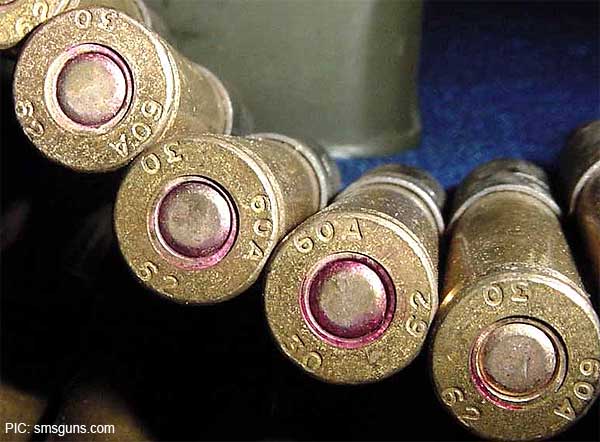
Surplus Ammo Safe to Shoot?
The other notable concern about surplus ammo isn’t just whether the supply will dry up, but rather whether the ammo is generally safe to shoot. Most shooters and collectors say the bigger danger is the potential damage it can do to a rare firearm.

“There is no surplus ammunition that I would consider dangerous today,” says Summerhill. He does note that old Carcano ammo from World War II was considered dangerous, but the problem wasn’t the rifle, but rather the conditions used to make the rounds. “That ammo was made under slave labor in North Africa, and it was forced labor. So there was sabotage going on, and as a result shooters after the war experienced bad ammo. “
The results could include gases that could come back into the shooters face. He notes there has been some issues with 303 British coming out of Afghanistan that includes worrisome problems such as “hang fire.” A similar problem has been encountered with some Yugoslavian ammo, including hang fire and failure to fire, but he says that keeping the ammo in a warm space “seems to bring the ginger back to the primer.”
However, Summerhills says that much of the Cold War ammo is very good, notably the supplies coming from Romania. If anything, he adds the problem isn’t the reliability or the safety but the contents of the bullets.
“My main concern besides safety is the corrosive primers,” says Wozny. “I know that the ‘older,’ as in 1940s, 1950s and 1960s stuff is most likely corrosive but some surplus ammunition even made in the 1980s and 1990s – such as the French made – are corrosive. You can’t always trust the distributor to know, so you need to do some research.”
This is a real concern, as a lot of the surplus ammo hitting the market these days includes salt-based primers or those with corrosive chemicals high in mercury.(IE: Berdan Mercury Primers) For those in a dry climate, as well as those who clean the bore with ammonia based Windex right after use and normal gun car within 24 to 48 hours this shouldn’t be much of a problem however.
As such the worry isn’t really justified.
“There is a lot of misinformation out there,” says Summerhill. “If you keep the gun clean the ammo isn’t a problem. But issues like this can result in a bias against surplus ammo that just isn’t warranted.”
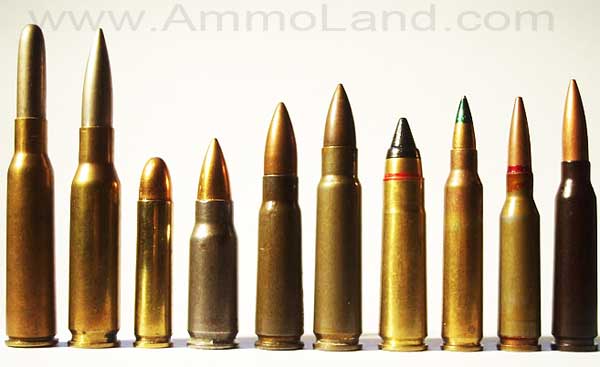
Common Surplus Calibers
While the aforementioned German ammo from World War II was common following the war, the “vintage” stuff has really started to dry up. Other World War II ammo was also far from rare in the “good old days,” says Wozny.
“In the 1960s and 1970s it was .45ACP and .30-06. I can tell you what ammunition wasn’t heavily surplussed, it was the 8mm variety.”
How the times have changed. Today the most commonly encountered calibers say the experts are those Soviet 7.62×54 and 7.62×39. That ammo, while a bit more expensive today than say a decade ago, is far from uncommon. Even when the price of ammo skyrocketed in late 2008 and 2009, the Communist Bloc ammo remained easy enough to obtain – albeit at inflated prices that the market could bear.
Some ammo that has all but vanished from the surplus market includes the British .303, and today shooters of the Enfield style rifles can expect to pay $1 or more a round – not exactly what you’d think would be the price for surplus ammo. As expected this has driven the price of the most common Lee Enfield rifles down, although the serious collector examples still fetch a high price. Other ammo that could rightfully be deemed “uncommon” or even “rare,” and is thus hard to find are the Italian 6.5 Carcano and the 7.35 Carcano. Likewise, Argentine ammo has also dried up, with reloads being the future for shooters of those vintage firearms.
Interestingly, in addition to the more common Communist ammo, surplus rounds are coming from countries that were essentially neutral in the World Wars as well as throughout the Cold War.
“The Swiss stuff is really flooding the market,” says Summerhill. “The Swiss have changed their small arms, and with it have flooded the market with ammo. The same thing is happening with the Swedes and we’re seeing a lot of the surplus ammo coming in from up there.”
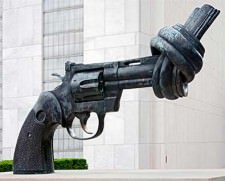
IANSA & UN Would Ban Surplus Ammunition Sales
The other equation with surplus ammo is that it has red tape that can “gum up the works” because this involves international and global markets. Thus the normal “supply and demand” equation is still true, but government regulations can actually create a problem with supply, which only further increases the demand. The Soviet era ammo that was once impossible to find, and then became plentiful could again dry up as some anti-gun / anti-freedom groups look to block its entry into the United States.
“Ironically, the BATF along with the Hillary Clinton State Department, is trying to end the importation of ammuntion and arms,” says Summerhill, noting that while the government can claim to have made no attempts to regulate firearms, a backdoor gun ban is possible if the government tightens control on surplus ammo. “They’re trying to block the importation of ammo. There are no laws to stop the importation, but they’re trying to increase regulation, which would still block the ammo from coming in. That’s what we’re seeing now. It is going to be interesting to see what surplus ammo is allowed in the country.”
Likewise says Summerhill, “the countries that have the ammo might not want to deal with the hassles of bringing it in here, even if the market conditions suggest it is favorable for them to do so. But others don’t see this as the end, or even the beginning of the end”
Clinton says there will never be an “end” of surplus ammo. “Maybe not but will there be an end to the SALE of surplus ammo? Could be, as the UN and others press nations to keep the surplus ammunition off the world market.”
The issue here is whether a treaty could ever be finalized and whether all the nations would even comply with such a restrictive treaty. For one thing ammunition is still big business for many nations, and if there are large stockpiles it still makes sense to sell the ammo rather than let it continue to age and go bad. There are even suggestions that the treaty would only obstruct ammunition that is generally not suitable to sporting use, and most surplus ammo still is useful for sport shooting.
“I don’t fear the UN treaty as much as some in the hobby,” says Clinton. “I see such a deal so complicated as to be just not workable worldwide.”
Surplus Ammo’s Future Outlook
The final truth is that there remains a lot of surplus ammo in the United States already. Prices will go up and down with the supply. But as we’ve seen, numerous conditions, including fear of bans will no doubt influence and affect the price of ammo in both the short term and the long term.
This happened last year, but as with other inflated prices – notably the cost of gasoline – the “stabilized” price that is the new “normal” is still higher than the pre-inflated prices. Likewise, with a return to “normal” prices, the supply has seemingly increased – an irony in supply and demand economics. The fact is that as the supply increases, the prices do fall.
“Lately, most surplus military ammo has been relatively easy to find since the ‘Obama panic’ buying has ceased,” says Gunboard.com member Jeremy. “The prices have dropped slightly too. I don’t expect the market to ever return to the days when surplus ammo was cheap however.”
Resources:
Want to see your company listed here? Email Brian@AmmoLand.com- www.LuckyGunner.com
- www.AimSurplus.com
Read Related:
